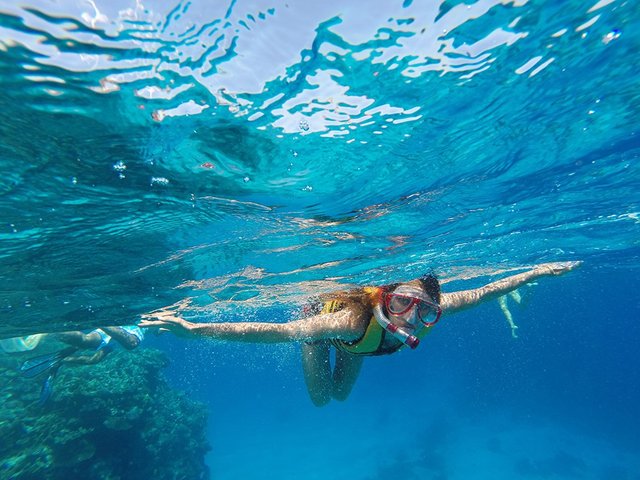Hi, Steemit! This is my second post! These fishes for you!!!
I want to share with you some shots of the unique underwater world of the Red Sea!
I hope that the beauty of the fish will inspire you to be more creative, as well as me.
I used Go Pro 3 video camera to shoot all those videos.

Bluespotted ribbontail ray
The International Union for Conservation of Nature (IUCN) has listed this species as Near Threatened, as it faces widespread habitat degradation and intensive fishing pressure throughout its range. While timid and innocuous towards humans, the bluespotted ribbontail ray is capable of inflicting an excruciating wound with its venomous tail spines. The blue spots are a warning to everyone to stay away because it is venomous.Surgeonfish
The sohal surgeonfish or sohal tang, Acanthurus sohal, is a Red Sea endemic which grows to 16 in (40 cm) in the wild. Like other tangs, the sohal tang is compressed laterally, making it extremely maneuverable and fast along the reef. It has a horizontal, blade-like spine along the base of its tail on both sides, which folds into the fish, pointing anteriorly towards the head. During defense and aggression, tangs flick the spine at other fish or intruders, causing physical harm. The surgeonfish are named for this scalpel-like spine. Its range includes all reef environments in the Red Sea, to 90 ft or deeper. It is one of the most aggressive tangs, and combined with its large size for a tang, is a dominant fish along the Red Sea reef.Royal angelfish
Picasso triggerfish
The Picassofish is truly a work of art! Not only does it have a strange oblong shape, but the sporadic blocks of colors are reminiscent of the work created by the artist for which the fish is named. Also known as the reef triggerfish, this artistic animal is abundant in the Red Sea and even ranges as far as Hawaii, where it is the official state fish. Picasso triggerfish live in the reefs and sandy areas of coral reefs where it eats just about everything that comes along. They are always restlessly swimming around and can vigorously protect their territory against intruders, including divers, especially when guarding their eggs during reproduction season. This species has one type of single cone (SC), with visual pigment peaking in sensitivity at 413 nm (S),[3] and a double cone with different visual pigments in each member peaking at 480 nm (M) and 530 nm (L) respectively.[4] Behavioural research has provided evidence that individual members of the double cones can act as independent channels of colour information, aiding in understanding double cone function.[5] This research suggests the species has trichromatic vision, like humans.
I hope you enjoyed watching this video!
Thank you!
MOAR!
You have a real talent there!
Really great shots again, keep going! Upvoted and followed your blog. Im happy about your visii and votes at my blog and my latest article here too: https://steemit.com/photography/@future24/photography-pictures-of-my-funny-cat-kumar-aboutme Thank you and best regards! Jonas
Congratulations @emilysw! You have received a personal award!
Click on the badge to view your own Board of Honor on SteemitBoard.
For more information about this award, click here
Congratulations @emilysw! You have received a personal award!
Click on the badge to view your Board of Honor.
Congratulations @emilysw! You received a personal award!
You can view your badges on your Steem Board and compare to others on the Steem Ranking
Vote for @Steemitboard as a witness to get one more award and increased upvotes!